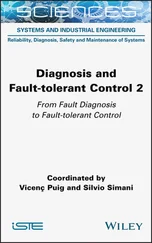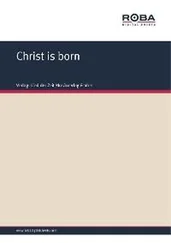259 242
260 243
261 245
262 246
263 247
264 248
265 249
266 250
267 251
268 252
269 253
270 254
271 255
272 256
273 257
274 258
275 259
276 260
277 261
278 262
279 263
280 264
281 265
282 266
283 267
284 268
285 269
286 270
287 271
288 272
289 273
290 274
291 275
292 276
293 277
294 278
295 279
296 280
297 281
298 282
299 283
300 284
301 285
302 286
303 287
304 288
305 289
306 290
307 291
308 292
309 293
310 295
311 296
312 297
313 298
314 299
315 300
316 301
317 302
318 303
319 304
320 305
321 306
322 307
323 308
324 309
325 310
326 311
327 312
328 313
329 314
330 315
331 316
332 317
333 318
334 319
335 320
336 321
337 322
338 323
339 324
340 325
341 326
342 327
343 328
344 329
345 330
346 331
347 332
348 333
349 334
350 335
351 336
352 337
353 338
354 339
355 340
356 341
357 342
358 343
359 344
360 345
361 347
362 348
363 349
364 350
365 351
366 352
367 353
368 354
369 355
370 356
371 357
372 358
373 359
374 360
375 361
376 362
377 363
378 364
379 365
380 366
381 367
382 368
383 369
384 370
385 371
386 372
387 373
388 374
389 375
390 376
391 377
392 378
393 379
394 380
395 381
396 382
397 383
398 384
399 385
400 386
401 387
402 388
403 389
404 390
405 391
406 392
407 393
408 394
409 395
410 396
411 397
412 398
413 399
414 400
415 401
416 402
417 403
418 404
419 405
420 406
421 407
422 408
423 409
424 410
425 411
426 412
427 413
428 414
429 415
430 416
431 417
432 419
433 420
434 421
435 422
436 423
437 424
438 425
439 427
440 428
441 429
442 430
443 431
444 432
Scrivener Publishing
100 Cummings Center, Suite 541J
Beverly, MA 01915-6106
Publishers at Scrivener
Martin Scrivener ( martin@scrivenerpublishing.com)
Phillip Carmical ( pcarmical@scrivenerpublishing.com)
From Traditional Fault Tolerance to Blockchain
Wenbing Zhao
Cleveland State University

This edition first published 2021 by John Wiley & Sons, Inc., 111 River Street, Hoboken, NJ 07030, USA and Scrivener Publishing LLC, 100 Cummings Center, Suite 541J, Beverly, MA 01915, USA
© 2021 Scrivener Publishing LLC
For more information about Scrivener publications please visit www.scrivenerpublishing.com.
All rights reserved. No part of this publication may be reproduced, stored in a retrieval system, or transmitted, in any form or by any means, electronic, mechanical, photocopying, recording, or otherwise, except as permitted by law. Advice on how to obtain permission to reuse material from this title is available at http://www.wiley.com/go/permissions.
Wiley Global Headquarters
111 River Street, Hoboken, NJ 07030, USA
For details of our global editorial offices, customer services, and more information about Wiley products visit us at www.wiley.com.
Limit of Liability/Disclaimer of Warranty
While the publisher and authors have used their best efforts in preparing this work, they make no representations or warranties with respect to the accuracy or completeness of the contents of this work and specifically disclaim all warranties, including without limitation any implied warranties of merchant-ability or fitness for a particular purpose. No warranty may be created or extended by sales representatives, written sales materials, or promotional statements for this work. The fact that an organization, website, or product is referred to in this work as a citation and/or potential source of further information does not mean that the publisher and authors endorse the information or services the organization, website, or product may provide or recommendations it may make. This work is sold with the understanding that the publisher is not engaged in rendering professional services. The advice and strategies contained herein may not be suitable for your situation. You should consult with a specialist where appropriate. Neither the publisher nor authors shall be liable for any loss of profit or any other commercial damages, including but not limited to special, incidental, consequential, or other damages. Further, readers should be aware that websites listed in this work may have changed or disappeared between when this work was written and when it is read.
Library of Congress Cataloging-in-Publication Data
ISBN 978-1-119-68195-3
Cover image: Pixabay.Com
Cover design by Russell Richardson
Set in size of 11pt and Minion Pro by Manila Typesetting Company, Makati, Philippines
Printed in the USA
10 9 8 7 6 5 4 3 2 1
To My Parents
1.1An example of a chain of threats with two levels of recursion.
1.2The rollback recovery is enabled by periodically taking checkpoints and usually logging of the requests received.
1.3With redundant instances in the system, the failure of a replica in some cases can be masked and the system continue providing services to its clients without any disruption.
1.4Main types of assets in a distributed system.
2.1An example distributed system.
2.2Consistent and inconsistent global state examples.
2.3An example of the domino effect in recovery with uncoordinated checkpointing.
2.4Finite state machine specification for the coordinator in the Tamir and Sequin checkpointing protocol.
2.5Finite state machine specification for the participant in the Tamir and Sequin checkpointing protocol.
2.6Normal operation of the Tamir and Sequin checkpointing protocol in an example three-process distributed system.
2.7Finite state machine specification for the Chandy and Lamport distributed snapshot protocol.
2.8Normal operation of the Chandy and Lamport global snapshot protocol in an example three-process distributed system.
2.9A comparison of the channel state definition between (a) the Chandy and Lamport distributed snapshot protocol and (b) the Tamir and Sequin global checkpointing protocol.
2.10Example state intervals.
2.11An example for pessimistic logging.
2.12Transport level (a) and application level (b) reliable messaging.
2.13Optimization of pessimistic logging: (a) concurrent message logging and execution (b) logging batched messages.
2.14Probability density function of the logging latency.
2.15A summary of the mean logging latency and mean end-to-end latency under various conditions.
2.16Probability density function of the end-to-end latency.
2.17Normal operation of the sender-based logging protocol.
2.18An example normal operation of the sender-based logging protocol.
Читать дальше













